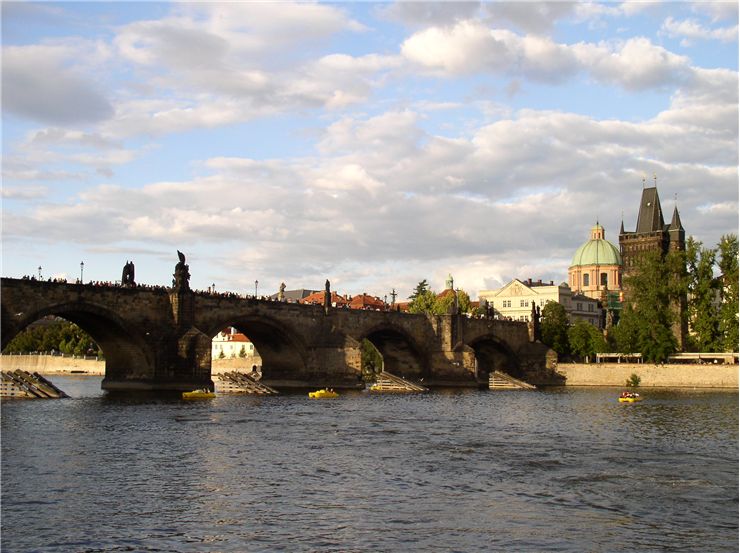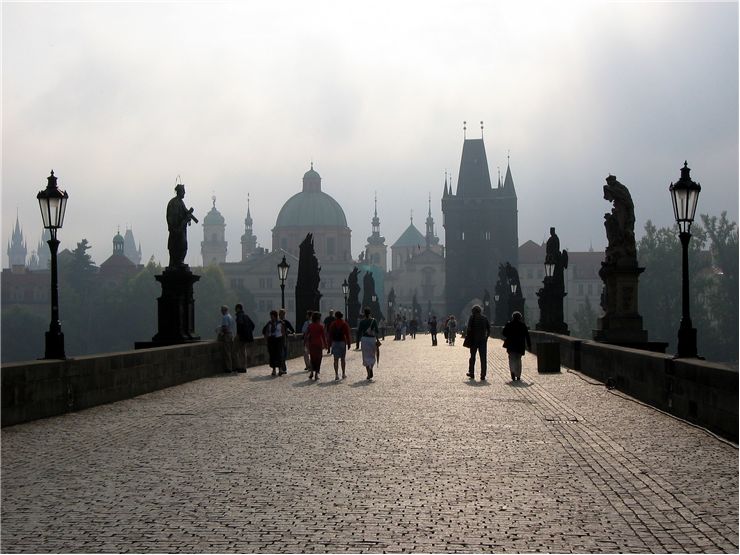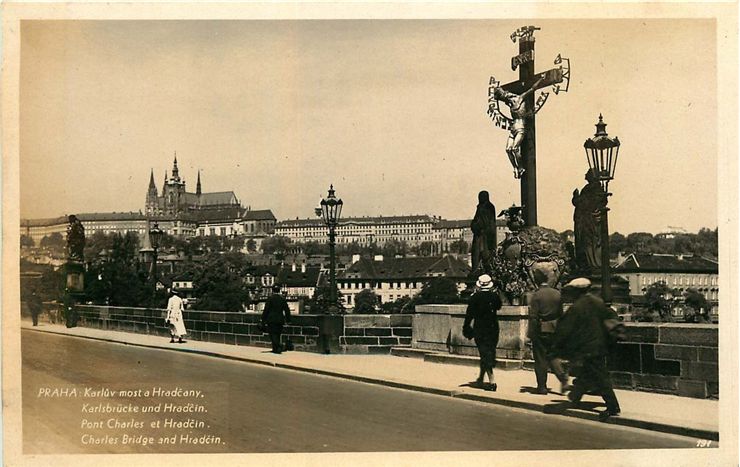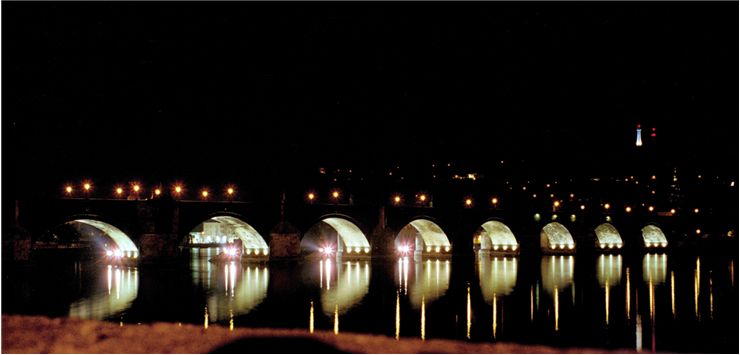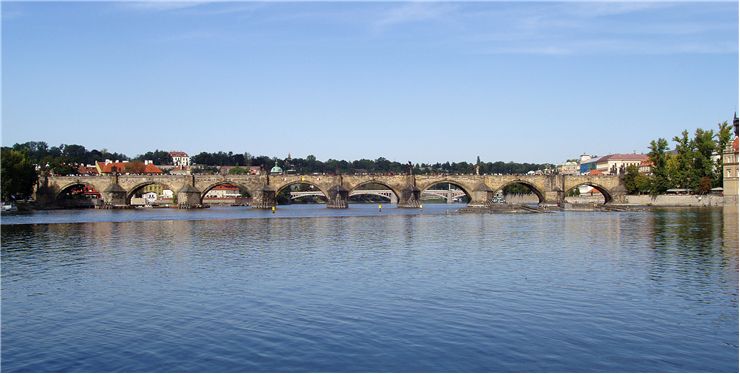Charles Bridge - Facts and History of Karlův most
Charles Bridge is located in Prague on River Vltava. Construction of Charles Bridge started in 1357 under the order of King Charles IV and finished in 1402. Designer of the bridge was Peter Parler. He made it 516 meters long and 9.5 meters wide. Until 1841, Charles Bridge (then called Stone Bridge or Prague Bridge) was the only way of dry crossing the Vltava. Because of that, it was a very important trade route and a link between Eastern and Western Europe.
Before Charles Bridge, on the same place in 1158, while King Vladislav II reigned Poland, there was another stone bridge, so-called “Judith Bridge”. It was constructed as a replacement for an older wooden bridge that was on that same place. Judith Bridge was one of the earliest stone bridges built after the end of Roman Empire. Bridge got name after the wife of King Vladislav II - Judith of Thuringia which helped building of the bridge. When River Vltava flooded in 1342, it took Judith Bridge away. Because of that King Charles IV decided to build a new bridge - Stone Bridge which was in 1870 renamed into Charles Bridge.
Bridge had its own fair share of troubles and damages throughout the history. Flood were very frequent for instance. Flood of 1432 damaged three pillars while in 1784 five pillars were damaged. During the great flood of 1890 great amount of debris from upstream stuck to the bridge and broke three arches. Floods in 2002 caused only minor damage to the arches of the bridge. Bridge also presented a good defense system for the city. At the end of the Thirty Years War, in 1648, invading Swedes were stopped at Charles Bridge. In 1744, bridge was the place where the Prussians were defeted.
When it was built, Charles Bridge had only one ornament - large wooden cross. In 17th century wooden cross was replaced with a bronze one. First statue added was a statue of St. John of Nepomuk in 1683. He was thrown from the Charles Bridge into water on 20 March 1393 by King Wenceslaus and canonized in 18th century. It is believed that, if touched, statue will bring good luck. After that statue, some 30 others are added in baroque, classic and neo-gothic style. Today they are all replicas because many of them are damaged by weather conditions and transported and displayed in Lapidarium, a museum at the Prague Exhibition Grounds. In 1723, first oil street lights were installed on the bridge. They were replaced by gas light in 1866. In 1890 bridge suffered worst flood until then, when three arches collapsed and two statues were taken by the flood. Traffic on the bridge was pedestrian and horse carriages. In 1905, electric tram replaces horse line but in 1908 bus replaces electric tram. Great restoration of the bridge was done in 1965 -1967 with help from various cultural and scientific institutes and bridge was made pedestrian only. From then it is a favorite place of tourists and street vendors.
| Name | Charles Bridge |
| Offical Name | Karlův most |
| Other Name(s) | Stone Bridge, Kamenný most, Prague Bridge, Pražský most |
| Country | Czech Republic |
| Crosses | Vltava River |
| Location | Prague, Czech Republic |
| Type/Design/Architectural Style | Stone bridge, Arch bridge |
| Material | Stone, Bohemian sandstone |
| Designer/Architect | Peter Parler |
| Carries | Pedestrian bridge |
| Width | 9.5 metres (31 ft) |
| Total Lenght | 515.8 metres (1,692 ft) |
| Span / Longest Span | 13.4 metres (44 ft) |
| Clerance Bellow | 13 metres (43 ft) |
| Construction Begin | 1357 |
| Construction End | 1402 |
